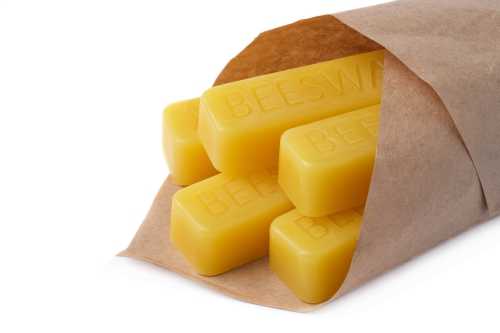Maharlika (The Philippines)
Table of Contents
| Activity | Method |
|---|---|
| Trade | Barter |
Territories
Manila 麻逸
The country of Maharlika* (Ma-i) is north of Borneo. Its capital has over 1,000 families settled together along both banks of a creek [Pasig River].
Superphysics Note
The Maharlikans cover themselves with a sheet of cotton cloth or hide the lower part of the body with a sarong. There are bronze images of gods of unknown origin, scattered about in the grassy wilderness.

Pirates seldom come to this country.
When trading ships enter the bay, they stop in front of the officials’ place which is the place for bartering. After a ship has been boarded, the natives mix freely with the ship’s crew.
The chiefs are fond of white umbrellas. This is why the traders offer them as gifts.
The Maharlikan traders assemble in crowds and carry the goods away with them in baskets. Even if the foreign merchants do not know the Maharlikan traders and cannot distinguish them, there will be no loss.
- The native traders will bring those goods to other islands for barter. It will take 8-9 months* for them to return.
- They then repay the foreign merchants with what they had obtained for the goods.
- Some, however, do not return within the proper time**. This delay is why vessels trading with Maharlika are the last to return home.
Superphysics Note
Superphysics Note
The following places belong to Maharlika:
- Visayas
- Babuyan (Paipuyen)
- Mindanao (Pulilu)
- Luzon
- Butuan (Likintung)
- Bulacan (Lihan)
Maharlikan Exports

Their exports are:
- yellow wax
- cotton
- pearls
- tortoise-shell
- medicinal betel-nuts*
- yuta cloth
Superphysics Note
Maharlikan Imports
Foreign merchants barter for these with:
- porcelain
- trade-gold
- iron censers
- lead
- coloured glass beads
- iron needles*
Superphysics Note
Visayas (41: San-su 三嶼)
The Visayas* (Sansu or Three Islands) belong to Maharlika:
- Panay-Cebu (Kiamayen)
- Palawan
- Leyte-Samar (Pakinung)
Superphysics Note
Each has its own tribes scattered over the islands.
Their local customs are about the same as those of Maharlika. Each tribe has around 1,000 families. The lands have many lofty ridges and ranges of cliffs rise as steep as the walls of a house.
The Visayans build wattled huts perched in lofty and dangerous spots. Since the hills have no springs, the women carry on their heads two or three jars one above the other to fetch water from the streams. They climb the hills with such burdens as if they were walking on level ground.
In the remotest valleys, there lives another tribe called Aetas (Hai-tan) who are small, with round brown eyes and curly hair. They nest in tree tops. Sometimes, parties of three or five lurk in the jungle, and shoot arrows on passers-by without being seen. Many have fallen victims to them. If thrown a porcelain bowl, they will stoop and pick and go away leaping and shouting for joy.

Visayan Exports
Foreign traders arrive by announcing their presence by beating drums then moor their ships midstream. The Visayans race to the ship in small boats, carrying the following for barter:
- cotton
- yellow wax
- native cloth
- coconut-heart mats
If the prices of goods cannot be agreed upon, the chief of the local traders must go in person, in order to come to an understanding.
The natives are then offered gifts of:
- silk umbrellas
- porcelain
- rattan baskets
The foreign merchants hold one or two natives as hostages on board while they go on shore to trade. They return those hostages after trading is finished.
A ship will only anchor for 3-4 days and then move to another place. The Visayan settlements are along the coast are not connected by common jurisdiction. They are are all independent.
The coast faces south-west. During the south-west monsoon, ships are unable to anchor there. This is why the traders to the Visayas do the return trip in May or June.
Visayan Imports
The following are exchanged in barter:
- porcelain
- black damask
- various other silks
- beads of all colors
- leaden sinkers for nets
- tin
Mindanao
Mindanao (Pulilu) is connected with the Visayas, but its settlements are more populous. Most of the people are of a cruel disposition and given to robbery*.
Superphysics Note
The sea thereabout is full of bare ribs of rock with jagged teeth like blasted trees, their points and edges sharper than swords and lances. When ships pass, they tack out in time in order to steer clear of them.
From here come coral-trees, the tsinglangkan, and the shanhu varieties. But they are very difficult to get.
Their local customs and commercial usages are the same as the Visayas.
Yuan Dade Nanhai zhi 元大德南海志
Brunei administrated the following places* in Maharlika:
- Mindanao (Malilu 麻裏蘆)
- Manila (Ma-yi)
- Puduan Sulu
Superphysics Note
Additional Possible Timeline by Austin Craig
| Year | Event |
|---|---|
| 221-251 | First contact with China |
| 414 | Buddhist pilgrim’s ship arrives |
| 605 | Visayas invades Taiwan |
| 627 649 | First tribute to China from Dapitan |
| 982 | Manila merchants in Canton |
| 1372 | First tribute to China from Luzon |
| 1405 | Chinese official sent to govern Luzon (possibly via Pangasinan) |
| 1405 | Luzon tribute to China |
| 1407 | Visit by Chinese Armada |
| 1406 | Embassy from Pangasinan |
| 1417 | Mission and Burial of Sulu king in China |
| 1420 | Another Sulu mission |
Caste system in the Philippines
| Caste | Modern Manifestation |
|---|---|
| Datu | Landlords, Government/Politicians, Executives, Large Investors, Financiers, Large Asset holders |
| Maharlika | Self-Employed, Employees, Freelancers |
| Alipin Namamahay | Maids, Drivers, Kasambahay |
| Alipin Sagigilid | Criminals, Homeless, Beggars |
| Babaylan | Church, Religions, Researchers, Universities, Healthcare system |